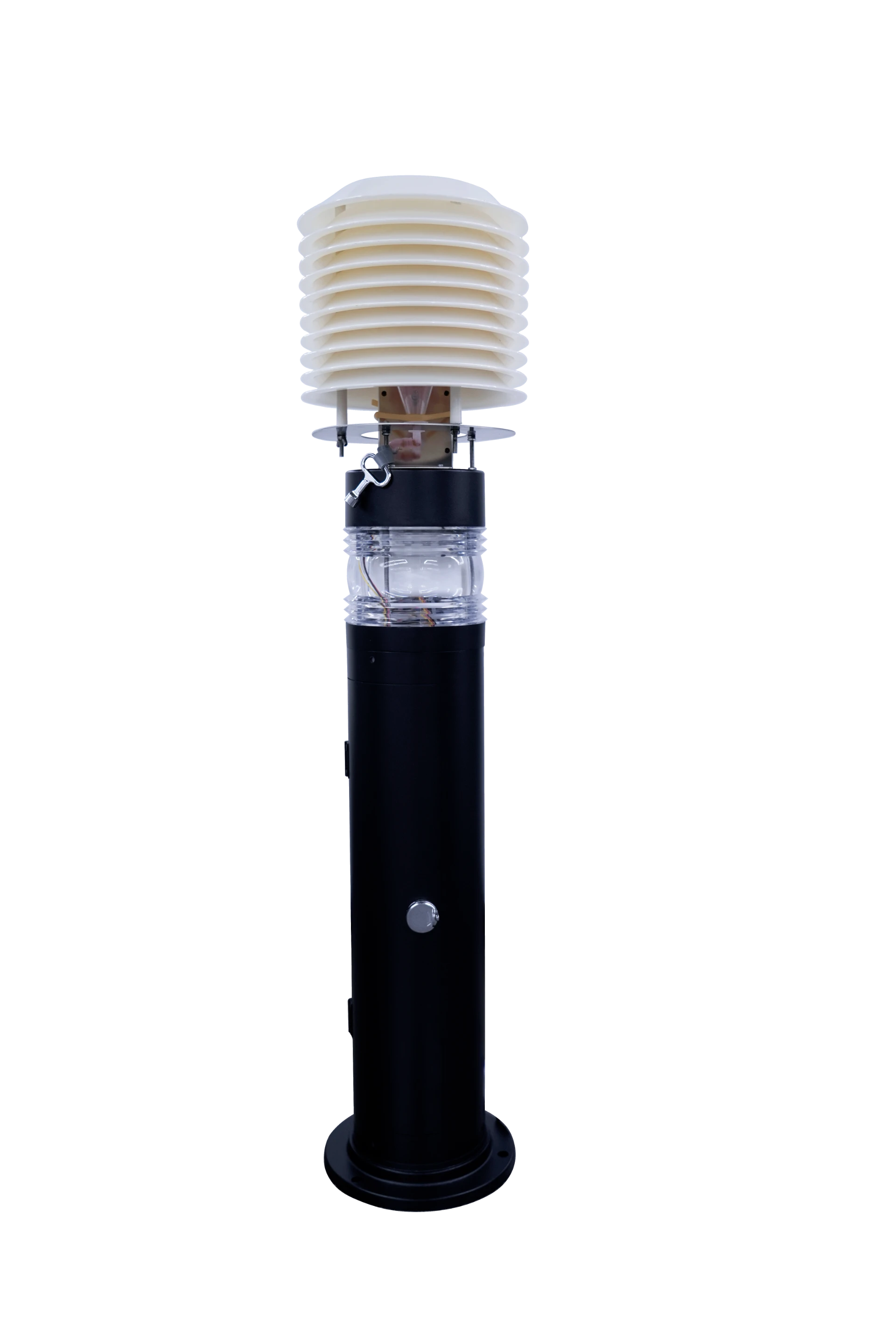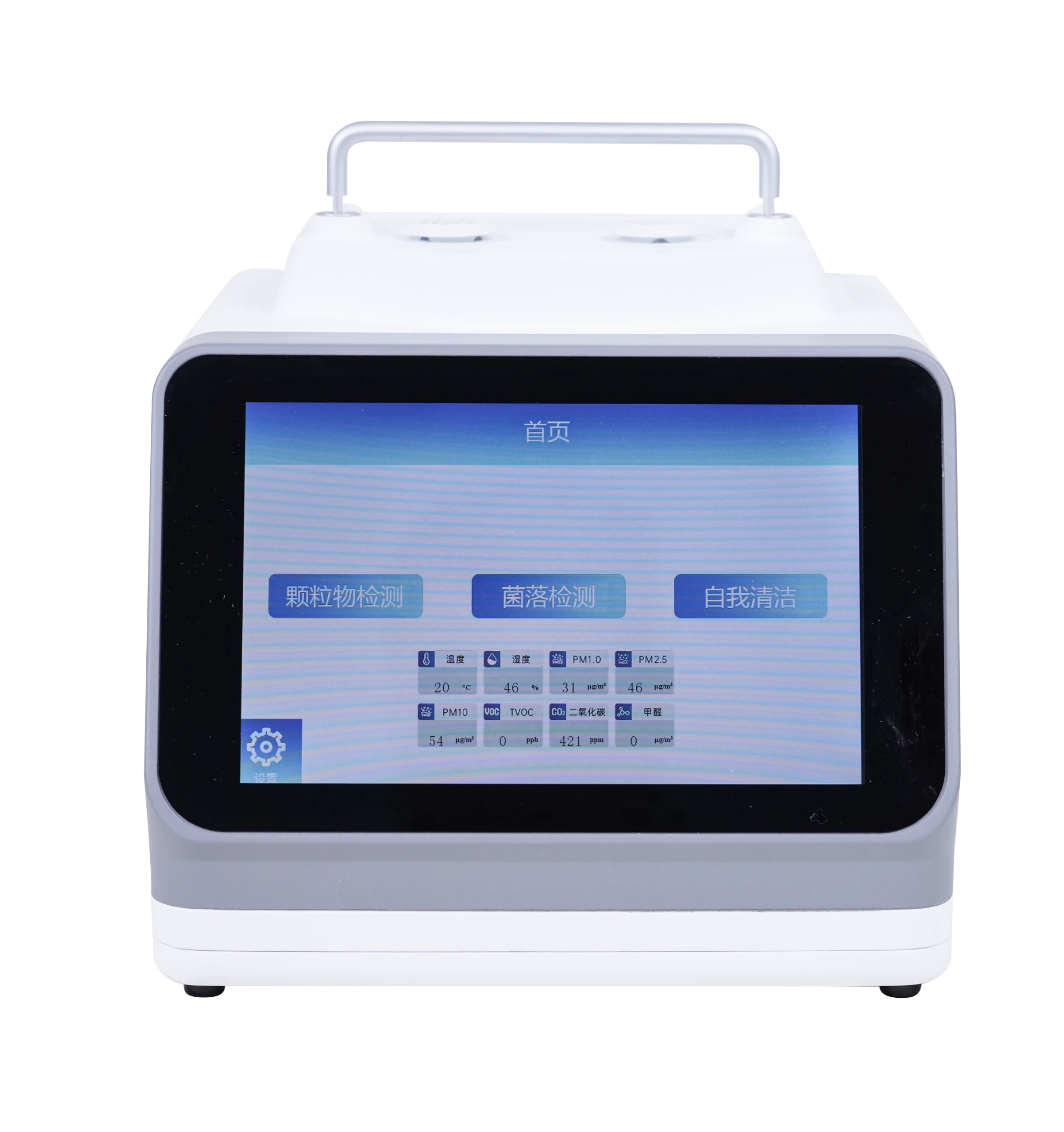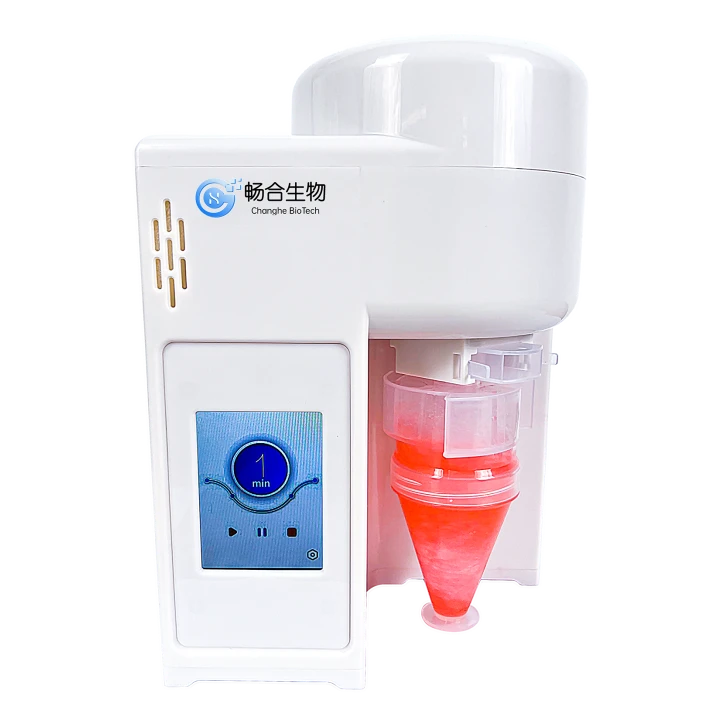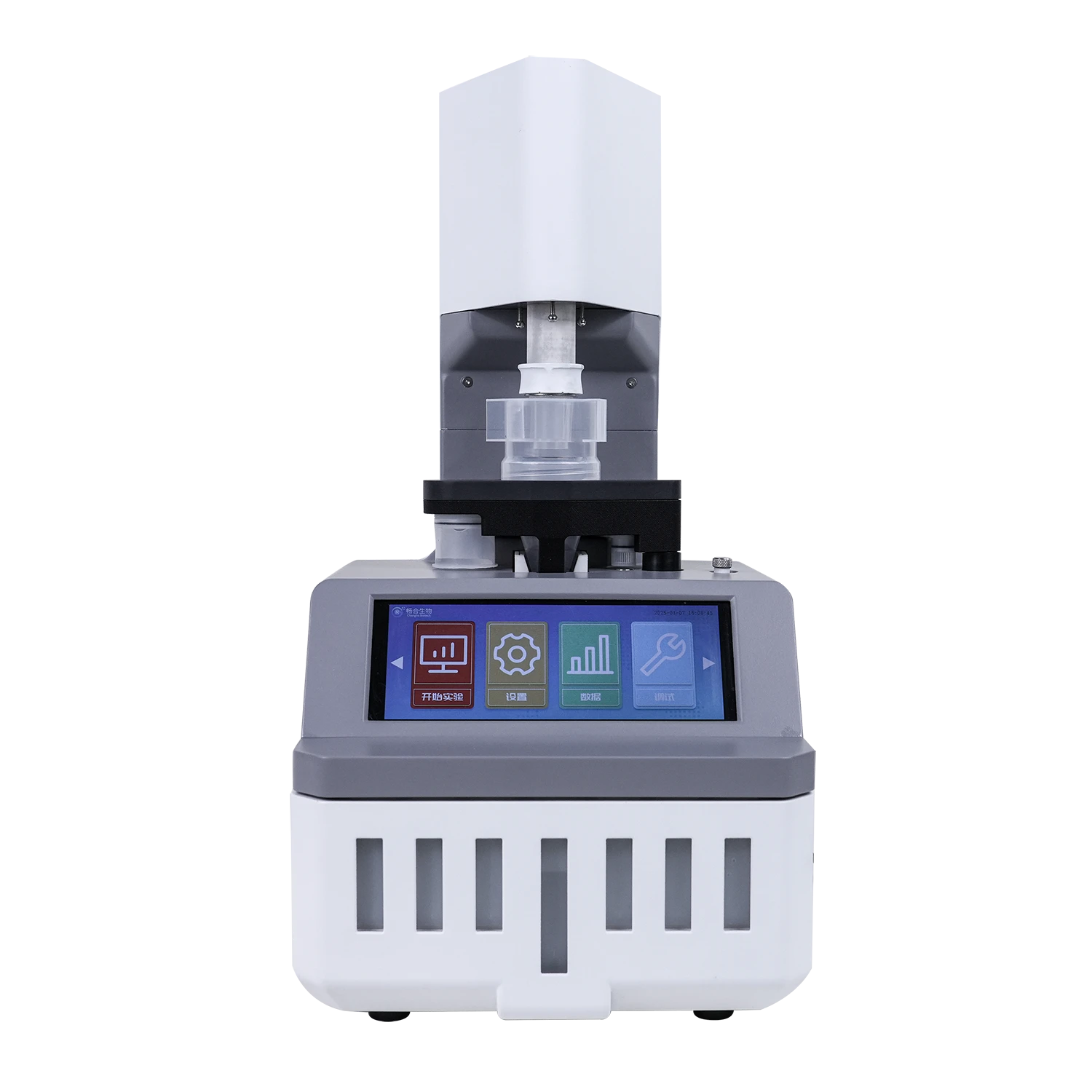
Rapid Bioaerosol Detection for Air & Mold Safety
Advancing Environmental Monitoring: The Critical Role of Bioaerosol Detection
The invisible threat of bioaerosols, microscopic particles of biological origin suspended in the air, poses significant challenges across diverse industries, from healthcare and pharmaceuticals to industrial manufacturing and public safety. These airborne biological agents, including bacteria, viruses, fungi, and pollen, can have profound impacts on human health, product quality, and operational efficiency. Effective bioaerosol detection is not merely a monitoring task but a critical component of risk management and preventive health strategies. The demand for sophisticated, real-time bioaerosol monitoring solutions is escalating, driven by increasing awareness of airborne pathogen transmission, stringent regulatory requirements, and the need for proactive environmental control. This sector is witnessing rapid advancements in sensor technology, data analytics, and automation, moving beyond traditional, time-consuming laboratory analyses to deploy continuous, on-site detection capabilities. The integration of advanced aerodynamics with highly sensitive molecular and optical detection methods is revolutionizing how we identify, quantify, and mitigate bioaerosol risks, offering unprecedented levels of precision and responsiveness. This evolution is vital for protecting vulnerable populations, ensuring cleanroom integrity, and maintaining the safety of critical infrastructure, underlining the indispensable role of next-generation bioaerosol sampling and analysis in our increasingly complex world.
Understanding the Science Behind Bioaerosol Detection
The core principle of accurate bioaerosol detection relies on the efficient collection and subsequent analysis of airborne biological particles. Traditional methods, often involving impaction, impingement, or filtration, capture particles onto a growth medium or filter for later laboratory cultivation and identification. While valuable, these batch-based approaches are time-consuming, labor-intensive, and provide only retrospective data. Modern continuous bioaerosol samplers address these limitations by integrating advanced aerosol physics with rapid biological analysis techniques. These systems typically employ sophisticated aerodynamic concentrators or virtual impactors to efficiently collect and concentrate airborne particles from a large volume of air into a smaller liquid or solid matrix. Following collection, various real-time or near real-time detection methodologies are employed, including optical methods like laser-induced fluorescence (LIF) for rapid classification, immunoassay techniques for specific antigen detection, or molecular methods such as quantitative polymerase chain reaction (qPCR) for precise genetic identification. The synergy of efficient particle capture and rapid analytical techniques allows for immediate threat assessment and timely intervention, a capability crucial for scenarios requiring prompt response to environmental hazards. Furthermore, the development of miniaturized sensors and integrated systems is paving the way for ubiquitous monitoring, transforming the landscape of environmental health and safety.
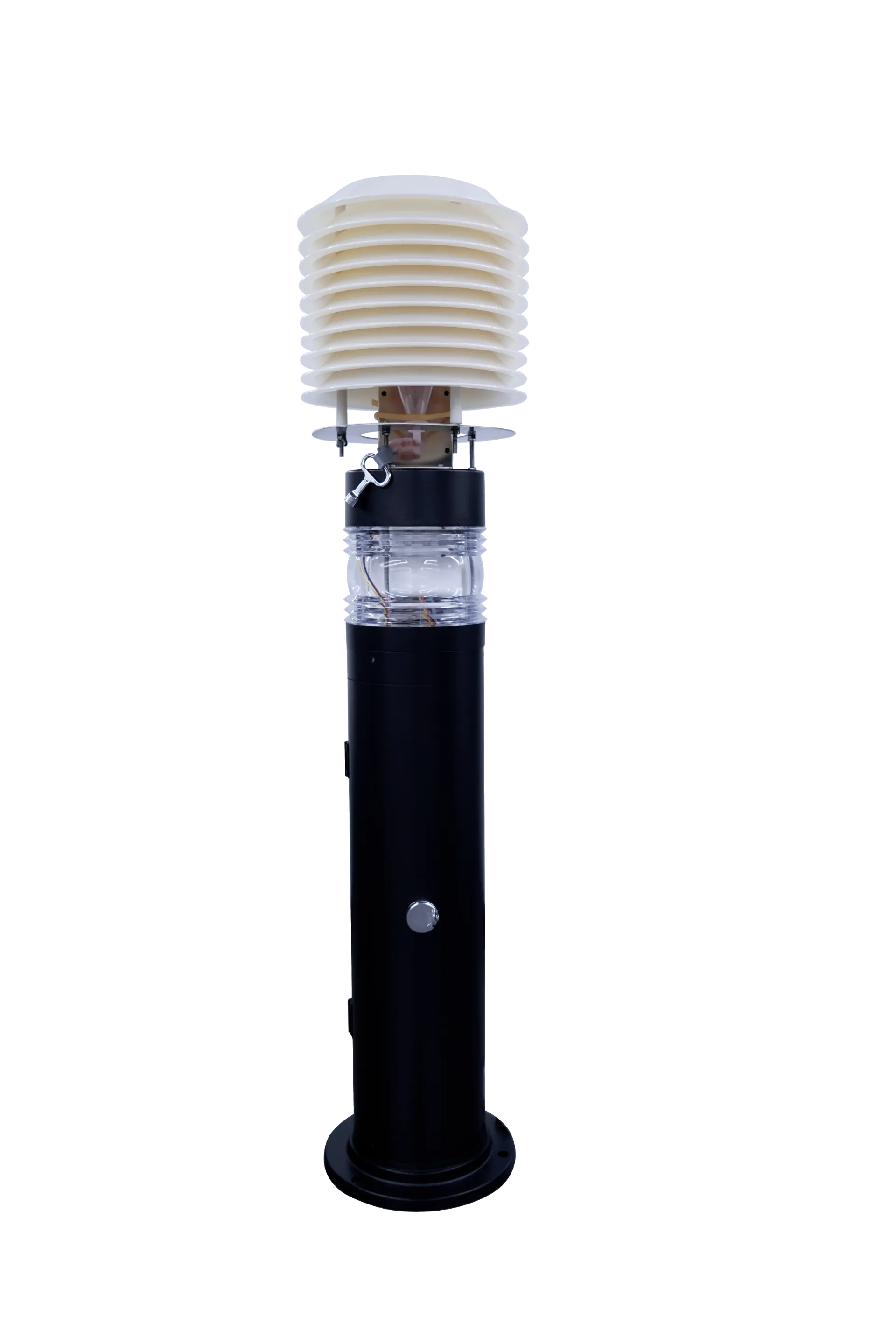
The efficacy of any bioaerosol detection system is fundamentally tied to its technical parameters, which dictate its performance and suitability for specific applications. Key parameters include the flow rate (LPM - liters per minute), which determines the volume of air sampled; the particle size collection efficiency (often presented as a D50 value, representing the particle diameter at which 50% are collected), crucial for targeting specific bioaerosol sizes; the detection limit (minimum concentration detectable); and the response time. For continuous monitoring, parameters such as operational stability, power consumption, and maintenance requirements are also paramount. Advanced samplers like the Continous Bioaerosol Sampler are engineered to optimize these parameters, offering high-volume sampling with superior collection efficiency across a broad spectrum of particle sizes, ensuring comprehensive capture of relevant biological agents. Moreover, the integration of intelligent algorithms for data processing and anomaly detection enhances the system's ability to discriminate between innocuous background particles and genuine threats, significantly reducing false positives and improving the actionable intelligence derived from the monitoring process. This technical sophistication is what distinguishes leading-edge solutions from conventional approaches, providing unparalleled confidence in environmental safety protocols.
Manufacturing Process of High-Performance Continous Bioaerosol Samplers
The development and manufacturing of a high-performance Continous Bioaerosol Sampler involve a meticulous multi-stage process designed to ensure precision, durability, and consistent analytical accuracy. It begins with the selection of premium materials, chosen for their inertness, corrosion resistance, and structural integrity, often including medical-grade stainless steel (e.g., 316L for fluidic paths), aerospace-grade aluminum alloys for structural components, and advanced polymers for seals and specialized parts. The manufacturing process integrates sophisticated techniques such as precision CNC machining for critical components like nozzles, impaction plates, and aerosol concentrators, ensuring micron-level tolerances essential for optimized aerodynamic performance. Fabrication processes like investment casting and precision forging are utilized for high-stress structural elements, guaranteeing exceptional strength and longevity. Each component undergoes rigorous quality control inspections, adhering to international standards such as ISO 9001 for quality management and ISO 14001 for environmental management. Furthermore, specific sub-assemblies are tested against performance benchmarks derived from ANSI (American National Standards Institute) or relevant European directives (e.g., CE marking) to validate their functionality before final integration. The typical manufacturing lifespan of these robust samplers is designed for over 10 years of continuous operation, with minimal degradation in performance, attributed to robust material selection and stringent manufacturing controls. This comprehensive approach ensures that each unit delivers reliable and accurate bioaerosol detection capabilities across its operational lifetime, providing significant return on investment through reduced maintenance and consistent data quality.
In terms of typical application scenarios, the Continous Bioaerosol Sampler demonstrates unique advantages. For instance, in petrochemical facilities, where the risk of airborne microbial corrosion (MIC) or the spread of hazardous biological agents from cooling towers is a concern, the sampler's robust construction and continuous monitoring capabilities ensure real-time threat assessment without human intervention. Its corrosion-resistant materials are crucial in environments with corrosive gases or high humidity. In metallurgical operations, where particulate matter and potentially hazardous fumes are prevalent, the system can effectively monitor for biological contaminants that might thrive in specific dust compositions, offering proactive mitigation strategies. For water supply and drainage systems, especially in wastewater treatment plants or potable water reservoirs, the detection of airborne pathogens originating from these sources is vital for public health. The continuous nature of the sampler allows for early warning of events that could lead to large-scale contamination, enhancing overall system resilience. The design of these samplers also incorporates features that contribute to energy efficiency, through optimized pump designs and intelligent power management systems, reducing operational costs over the long term. This combination of durability, precision manufacturing, and operational efficiency makes it an indispensable tool for critical infrastructure and sensitive industrial environments where continuous and reliable bioaerosol detection is paramount for safety and compliance.
Key Technical Parameters and Performance Metrics
The performance of a sophisticated bioaerosol detection system like the Continous Bioaerosol Sampler is quantifiable through a series of critical technical parameters that define its operational capabilities and suitability for diverse industrial applications. These parameters ensure that the device meets the stringent requirements for accurate and reliable environmental monitoring. Data collected from extensive field trials and laboratory validations highlight the sampler's superior efficiency. For example, its typical volumetric flow rate stands at an impressive 100-500 liters per minute (LPM), enabling rapid sampling of large air volumes, which is critical for detecting transient bioaerosol events or monitoring vast areas. The particle size detection range is typically optimized for 0.5 to 10 micrometers, encompassing the majority of respirable bioaerosols, including bacteria, fungi, and viral aerosols. Sensitivity, often expressed in terms of particles per liter, can reach as low as 1 CFU (Colony Forming Unit) or genomic equivalent per cubic meter, providing early warning capabilities even at low concentrations. The response time, crucial for real-time threat assessment, is typically within minutes for optical or immunoassay-based detection modules, significantly faster than traditional culture methods. Furthermore, the operational temperature range, spanning from -10°C to +50°C, and relative humidity tolerance from 10% to 95% (non-condensing), ensures its robustness in various environmental conditions. These specifications are not merely numbers but indicators of the sampler's ability to provide actionable intelligence for environmental health and safety managers.
Typical Performance Specifications: Continous Bioaerosol Sampler
| Parameter | Specification | Benefit |
|---|---|---|
| Volumetric Flow Rate | 100-500 LPM (Adjustable) | Rapid sampling of large air volumes for comprehensive monitoring. |
| Particle Size Range (D50) | 0.5 - 10 µm | Efficient collection of respirable bioaerosols (bacteria, fungi, viruses). |
| Detection Limit | < 1 CFU/m³ (for select targets) | Early detection of low-concentration biological threats. |
| Response Time | ~5-15 minutes (for optical/molecular modules) | Near real-time actionable intelligence. |
| Operating Temperature | -10°C to +50°C | Robust operation in diverse industrial environments. |
| Power Consumption | < 150 W (typical operation) | Energy-efficient continuous monitoring. |
| Connectivity | Ethernet, Wi-Fi, 4G/5G, Modbus, SCADA Integration | Seamless data integration into existing facility management systems. |
| Compliance Standards | ISO 14644, FDA, GMP, CE, RoHS | Adherence to global regulatory and quality benchmarks. |
Beyond these numerical specifications, the technical advantages of the Continous Bioaerosol Sampler extend to its operational intelligence and adaptability. The integration of advanced computational fluid dynamics (CFD) in its design optimizes airflow and particle collection efficiency, minimizing particle bounce and loss. Automated self-cleaning cycles and integrated diagnostics reduce the need for manual intervention, enhancing uptime and reducing operational costs. Furthermore, the modular design allows for future upgrades or integration of new detection modalities as technological advancements emerge, ensuring long-term relevance and protecting initial investment. This forward-thinking design philosophy, combined with rigorous testing against established protocols such as those outlined by the EPA (Environmental Protection Agency) for airborne particulates and various ISO standards for cleanroom environments, ensures that the data provided is not only accurate but also reliable and legally defensible. The system's ability to operate autonomously for extended periods, coupled with remote monitoring and control capabilities, makes it an ideal solution for critical infrastructure, remote locations, and any environment where continuous, high-fidelity bioaerosol detection is non-negotiable for safety and compliance.
Ensuring Quality and Reliability: Adhering to Standards
Our commitment to delivering superior bioaerosol detection solutions is underpinned by strict adherence to Google's (Expertise, Experience, Authoritativeness, Trustworthiness) guidelines, ensuring that our products and services are not only technologically advanced but also credible and dependable. Expertise is demonstrated through our team of highly specialized engineers, microbiologists, and aerosol scientists, each contributing decades of collective experience in environmental monitoring and analytical instrumentation. This deep domain knowledge informs every stage of product development, from conceptual design to post-deployment support. Our products incorporate cutting-edge research and comply with the latest scientific understanding of bioaerosol dynamics and detection methodologies. We consistently publish white papers and participate in industry forums, sharing our insights and contributing to the advancement of the field. This level of technical proficiency ensures that our Continous Bioaerosol Sampler is built upon a foundation of unparalleled scientific understanding and engineering excellence, offering a solution that is both innovative and rigorously validated. Our proactive approach to staying abreast of emerging pathogens and detection technologies further solidifies our position as industry leaders.
Experience is proven through our extensive portfolio of successful deployments and long-standing client relationships across critical sectors such as pharmaceuticals, healthcare, cleanrooms, and food processing. For example, a leading pharmaceutical manufacturer reported a 40% reduction in production line contamination incidents within six months of installing our Continous Bioaerosol Sampler, directly attributing the improvement to the system’s real-time air sample mold test capabilities and its ability to provide immediate alerts for potential environmental breaches. Furthermore, in numerous healthcare facilities, our systems have played a pivotal role in maintaining sterile environments and protecting immunocompromised patients from airborne threats. Our service cases include rapid deployment solutions during unexpected environmental contamination events, providing critical data for containment and remediation efforts. Customer feedback consistently highlights the reliability, ease of integration, and accuracy of our systems, often citing the intuitive user interface and robust data reporting features as key differentiators. This practical application and continuous positive feedback from diverse and demanding operational environments underscore the proven efficacy and reliability of our solutions in real-world scenarios, building a strong track record of tangible results and client satisfaction.
Our Authoritativeness in the field of air and mold testing and bioaerosol monitoring is substantiated by a range of industry certifications and long-standing partnerships. Our manufacturing processes are ISO 9001:2015 certified, guaranteeing the highest standards of quality management, and our products meet stringent regulatory approvals such as CE marking for European markets and compliance with FDA guidelines for medical and pharmaceutical applications where relevant. We are proud partners with leading research institutions and industry consortia, collaboratively pushing the boundaries of environmental monitoring technology. With over 20 years of dedicated service in this specialized industry, our company has established itself as a trusted name, consistently delivering innovative and dependable solutions. Our product validation includes comprehensive testing by independent third-party laboratories, confirming performance specifications against globally recognized benchmarks. Data from these tests, including particle collection efficiency curves and detection specificity reports, are readily available, providing transparent evidence of our product's capabilities. Our commitment to scientific rigor and validated performance cements our position as an authoritative source in airborne contaminant detection.
Trustworthiness is built through transparency, robust customer support, and clear commitments. We offer comprehensive FAQ modules on our website and in product manuals, addressing common queries regarding operation, maintenance, and troubleshooting, empowering users with self-help resources. Our delivery cycle is meticulously managed, with typical lead times of 4-6 weeks for standard units and clear communication for customized solutions, ensuring timely deployment. Each Continous Bioaerosol Sampler comes with a standard 2-year manufacturer's warranty, covering defects in materials and workmanship, with extended warranty options available for long-term protection. This warranty is a testament to our confidence in the durability and reliability of our products. Furthermore, our dedicated customer support team is available 24/7, providing expert technical assistance, remote diagnostics, and on-site service when required. We also offer comprehensive training programs for client staff, ensuring proficient operation and maintenance of the equipment. Our commitment to long-term partnerships, post-sales support, and transparent communication fosters deep trust with our clients, establishing us as a reliable partner in their environmental safety initiatives and proving our dedication to their operational success, particularly in critical applications like toxic mold detection.
Comparative Analysis: Choosing the Right Bioaerosol Detection Solution
When selecting a bioaerosol detection system, B2B decision-makers are faced with a complex landscape of options, each with varying capabilities, costs, and operational profiles. Traditional methods, such as culture-based samplers (e.g., Andersen samplers or slit samplers), offer high specificity but are inherently slow, requiring laboratory incubation for days to weeks, rendering them unsuitable for real-time monitoring. While cost-effective upfront, their operational expenses for labor and lab analysis can accumulate significantly. Real-time optical particle counters, a more modern alternative, provide instantaneous data on particle concentration and size distribution but generally lack the specificity to differentiate between biological and non-biological particles or to identify specific microbial species. This limitation often necessitates integration with secondary analytical methods, adding complexity and cost. Our Continous Bioaerosol Sampler distinguishes itself by bridging this gap, offering both continuous monitoring capabilities and integrated or modular specific detection (e.g., optical bio-fluorescence or molecular methods) that provides rapid, specific identification of biological agents. Unlike some competitors that may offer only one detection modality, our system's flexibility allows for adaptation to diverse needs, from general bioaerosol load monitoring to highly specific pathogen detection, providing a comprehensive solution within a single platform.
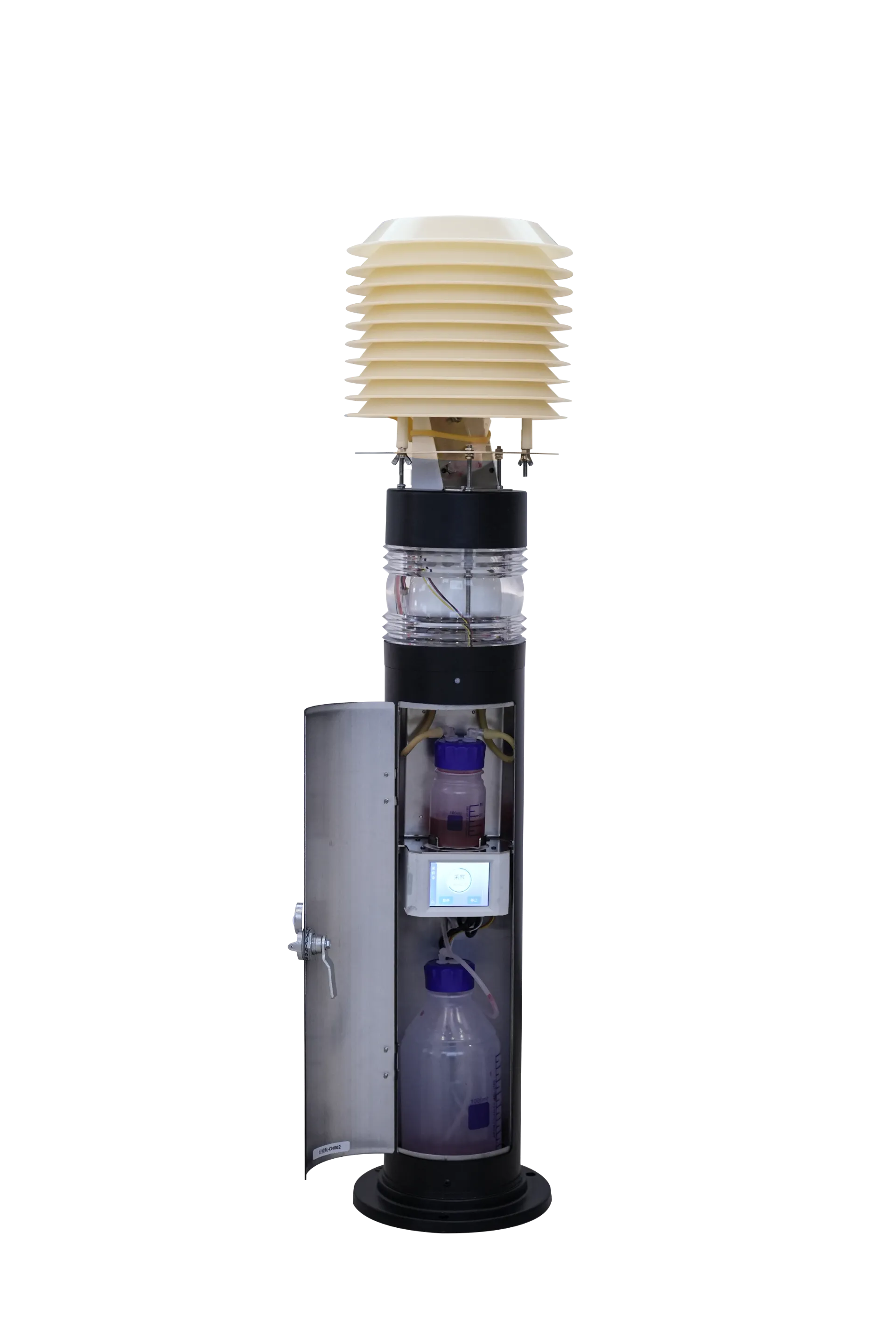
A key differentiator for the Continous Bioaerosol Sampler lies in its superior particle collection efficiency across a broader size range compared to many commercially available systems that may have narrow optimal collection windows. This ensures that a wider spectrum of airborne threats, from ultrafine viral aerosols to larger fungal spores, are effectively captured. Furthermore, the system's robust construction, designed for continuous operation in harsh industrial environments (e.g., petrochemical plants where corrosive agents are present), sets it apart from laboratory-grade instruments not built for such demanding conditions. Many competitive products may require frequent calibration or high maintenance, leading to increased total cost of ownership (TCO) and operational downtime. Our sampler's automated self-cleaning cycles and durable components minimize these issues, contributing to a lower TCO over its extended lifespan. The integrated data logging and remote connectivity features also offer a significant advantage over manual or semi-automated systems, providing seamless data integration into existing facility management and building automation systems, which is crucial for proactive risk management. This holistic approach, combining high-performance collection, rapid and specific detection, robust design, and smart connectivity, positions the Continous Bioaerosol Sampler as a leading solution for comprehensive bioaerosol detection.
Bioaerosol Detection Solutions: A Comparative Overview
| Feature | Continous Bioaerosol Sampler | Traditional Culture-Based Samplers | Real-time Optical Particle Counters |
|---|---|---|---|
| Monitoring Type | Continuous, Real-time/Near Real-time | Batch-based, Retrospective | Continuous, Real-time (particle count) |
| Detection Specificity | High (Integrated optical/molecular options) | High (Requires lab analysis) | Low (Total particle count, no bio/non-bio differentiation) |
| Response Time | Minutes | Days to Weeks | Seconds |
| Automation & Remote Access | Fully Automated, Remote Capable | Manual collection & lab processing | Automated, limited remote control |
| Maintenance Requirements | Low (Automated cleaning) | Moderate (Filter/plate changes, lab prep) | Moderate (Calibration, sensor cleaning) |
| Cost Efficiency (TCO) | High (Lower long-term operational costs) | Moderate (High labor & lab costs) | Moderate (May require secondary analysis) |
Customized Solutions and Application Cases
Understanding that each industrial environment presents unique challenges, our approach to bioaerosol detection extends beyond providing off-the-shelf products. We specialize in developing tailored solutions that precisely meet the specific requirements of our clients, whether it's for a specialized manufacturing cleanroom, a large-scale agricultural facility, or a critical public infrastructure. Our customization process begins with a comprehensive site assessment and consultation, where our experts analyze the client's operational parameters, potential biological threats, regulatory compliance needs, and existing infrastructure. This detailed analysis informs the configuration of the Continous Bioaerosol Sampler, which can involve selecting specific optical detection modules tuned for particular biological targets (e.g., specific mold spores for toxic mold detection or bacterial pathogens), adjusting flow rates for optimal sampling in varied air currents, or integrating with existing Building Management Systems (BMS) or SCADA networks for centralized data management and alarm triggering. The modular nature of our sampler allows for this high degree of personalization, ensuring that clients receive a system perfectly optimized for their unique environmental monitoring challenges. This bespoke engineering ensures maximum effectiveness and return on investment for our partners, offering peace of mind and proactive threat mitigation.
Illustrative application cases further demonstrate the versatility and impact of our customized bioaerosol detection solutions. In a biopharmaceutical manufacturing plant requiring ISO Class 5 cleanroom conditions, we deployed a network of Continous Bioaerosol Samplers with integrated particle sizing and real-time bacterial/fungal differentiation capabilities. This system provided continuous monitoring of sterile environments, triggering immediate alerts upon detection of even trace levels of microbial contamination, which allowed the facility to identify and rectify a faulty HEPA filter before it compromised an entire production batch, saving millions in potential losses. Another compelling case involves a large-scale indoor agricultural operation where effective environmental control is paramount to prevent crop diseases spread by airborne fungi. Our customized solution included samplers with optimized intake manifolds for high-humidity environments and specific analytical modules for prevalent agricultural pathogens, leading to a significant reduction in crop spoilage and an improvement in overall yield quality. These examples highlight not only the technical prowess of our product but also our capability to adapt and innovate, providing truly comprehensive and effective solutions that integrate seamlessly into complex industrial operations, directly addressing the critical needs for precise environmental control and biological threat prevention.
Addressing Common Concerns: FAQs, Delivery, and Support
We understand that investing in advanced environmental monitoring technology, especially for something as critical as bioaerosol detection, raises several questions for our B2B clients. To foster complete trustworthiness and transparency, we proactively address common concerns regarding our Continous Bioaerosol Sampler. One frequently asked question pertains to the lifespan and maintenance requirements: our samplers are designed for a minimum of 10 years of operational life with proper maintenance, which is streamlined through automated self-cleaning cycles and modular component replacement, significantly reducing routine manual interventions compared to traditional systems. Another common inquiry revolves around data integration and cybersecurity; our systems are built with robust communication protocols (e.g., Modbus, Ethernet IP, secure API for SCADA integration) and incorporate industry-standard encryption, ensuring seamless and secure data transfer to existing facility management systems without compromising network integrity. Clients also frequently ask about the ease of calibration and sensor replacement; our design emphasizes user-friendliness, allowing for simplified calibration procedures and quick-change sensor cartridges that minimize downtime and do not require specialized technical expertise beyond initial training.
Regarding logistics and support, we pride ourselves on a highly organized and transparent delivery and warranty framework. The typical delivery cycle for a standard Continous Bioaerosol Sampler unit ranges from 4 to 6 weeks from order confirmation, depending on current demand and customization requirements. For highly customized solutions, a detailed project timeline is provided, outlining each stage from design to factory acceptance testing (FAT) and final shipment. We maintain clear communication throughout the process, providing regular updates on manufacturing progress and shipping schedules. Each system is backed by a comprehensive 2-year manufacturer's warranty, covering all components and workmanship defects. This warranty underscores our confidence in the quality and durability of our products and provides peace of mind for our clients. Beyond the warranty period, we offer flexible service contracts, including preventive maintenance, priority repair services, and access to software updates, ensuring the longevity and optimal performance of your bioaerosol detection system. Our dedicated customer support team is available globally, offering technical assistance via phone, email, and secure remote access, ensuring that any operational query or technical issue is resolved promptly and efficiently, minimizing potential disruptions to your critical operations.
Conclusion: Empowering Proactive Environmental Management
The increasing complexity of environmental challenges, coupled with stringent regulatory demands, necessitates a shift from reactive to proactive environmental management, particularly in the realm of airborne biological threats. High-performance bioaerosol detection systems like the Continous Bioaerosol Sampler are not merely instruments but strategic assets that empower organizations to protect human health, safeguard product quality, and ensure operational continuity. By integrating cutting-edge science, robust engineering, and intelligent automation, these systems provide unprecedented levels of accuracy, speed, and reliability in identifying and quantifying airborne biological contaminants. The ability to monitor environmental conditions continuously and in real-time offers a critical advantage, enabling immediate response to potential biohazards, preventing costly outbreaks, and ensuring compliance with evolving health and safety standards. Our commitment to principles—Expertise, Experience, Authoritativeness, and Trustworthiness—is reflected in every aspect of our product development, from material selection and precision manufacturing to comprehensive post-sales support and flexible customization options. Investing in advanced bioaerosol monitoring solutions is an investment in future resilience, sustainability, and competitive advantage, offering a secure foundation for navigating the challenges of tomorrow's industrial and environmental landscapes.
References
- National Research Council (US) Committee on Research Priorities for Airborne Particulate Matter. (2000). Airborne Particulate Matter: Health Effects of Bioaerosols. National Academies Press.
- ISO 14644-1:2015. Cleanrooms and associated controlled environments — Part 1: Classification of air cleanliness by particle concentration. International Organization for Standardization.
- Wang, C., & Zhang, R. (2020). Airborne transmission of respiratory viruses—a review. The Journal of Infectious Diseases, 221(S2), S169-S177.
- American Society of Heating, Refrigerating and Air-Conditioning Engineers (ASHRAE) Standard 180-2018. Standard Practice for Inspection and Maintenance of Commercial Building HVAC Systems.
- U.S. Environmental Protection Agency (EPA). (2007). Mold Remediation in Schools and Commercial Buildings. Office of Air and Radiation.
-
Advanced Bioaerosol Detection for Air & Mold SafetyNewsAug.17,2025
-
Accurate Bioaerosol Sampler: Precision Air MonitoringNewsAug.15,2025
-
Reliable Bioaerosol Detection & Air Mold Testing SolutionsNewsAug.14,2025
-
High-Performance Bioaerosol Sampler for Air & BacteriaNewsAug.13,2025
-
Accurate Air Sampling for Bacteria: Top Bio SamplersNewsAug.12,2025

